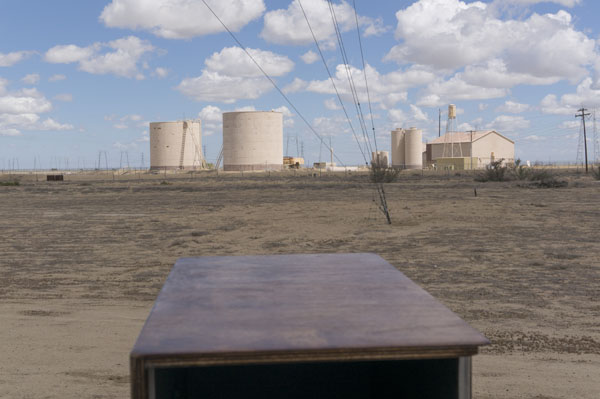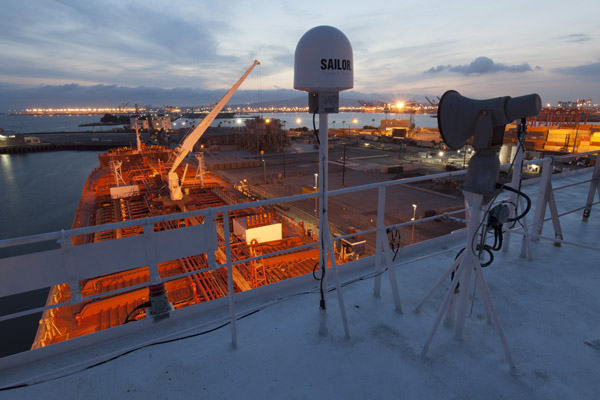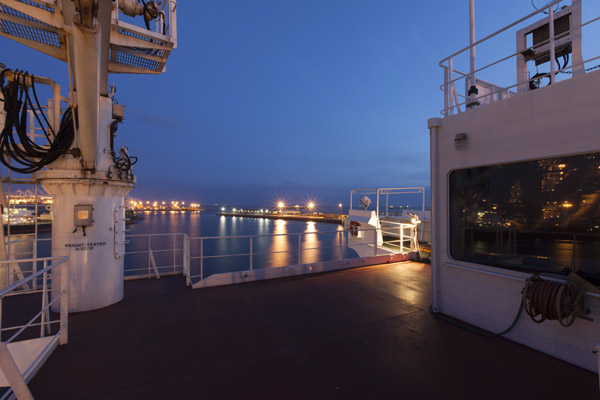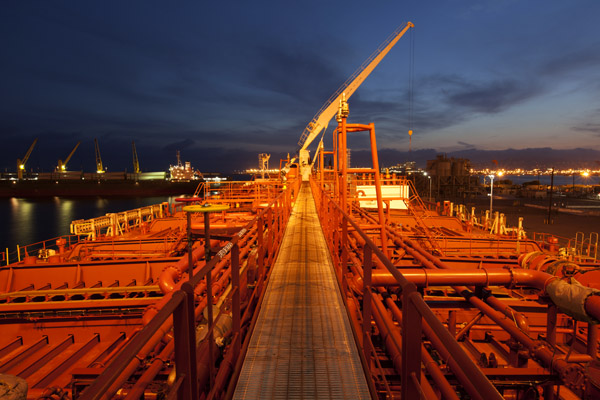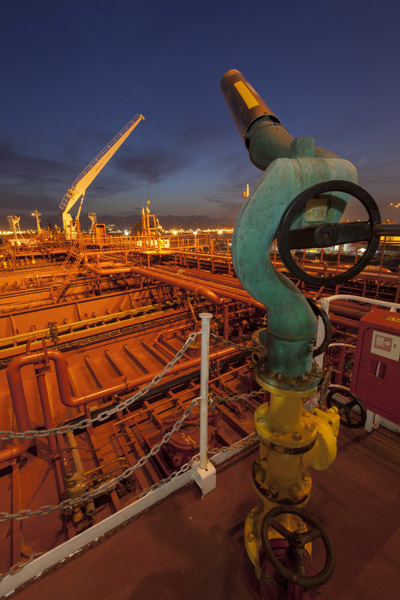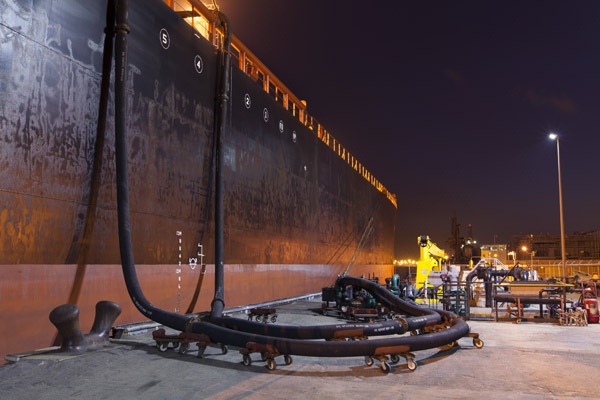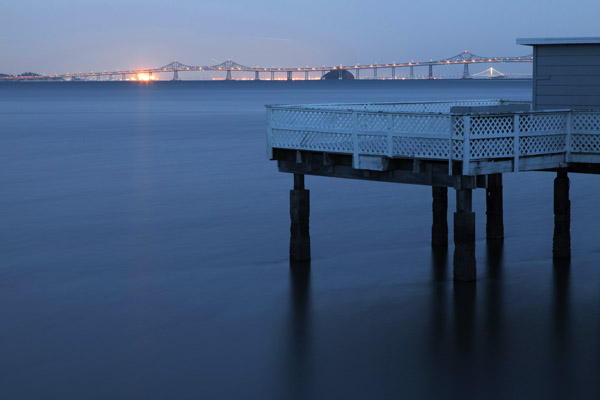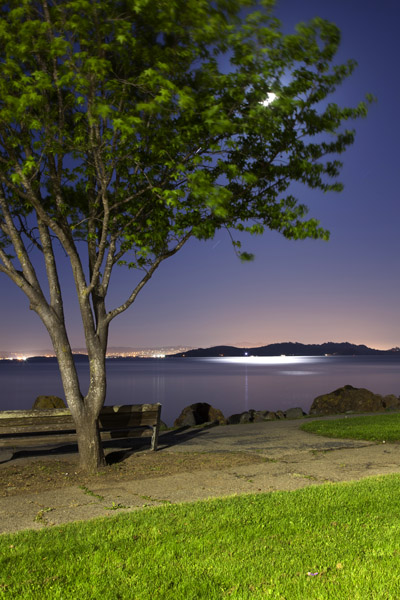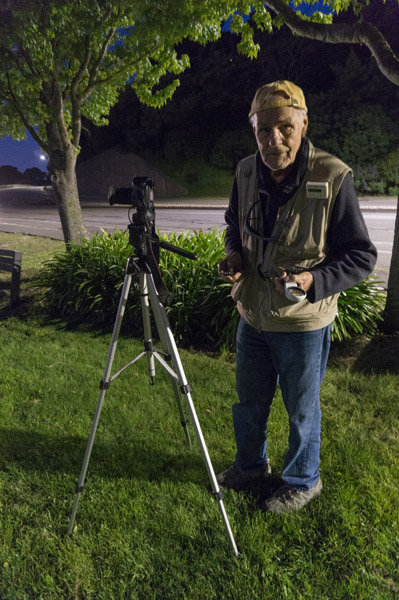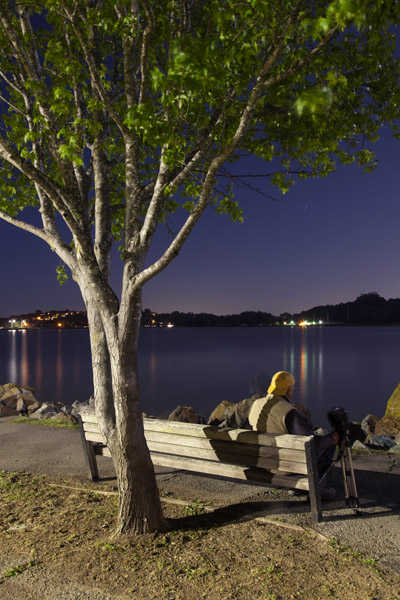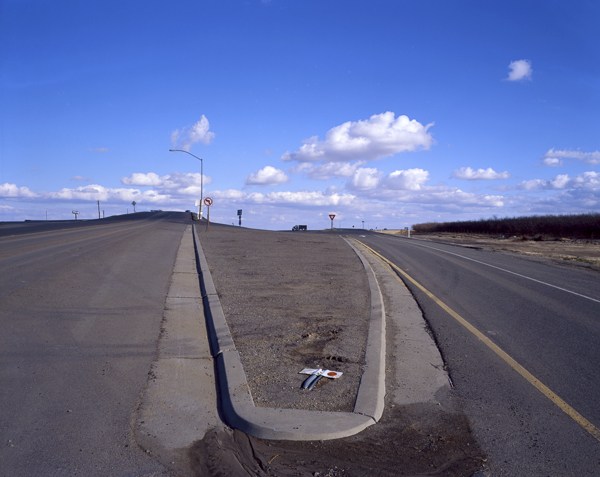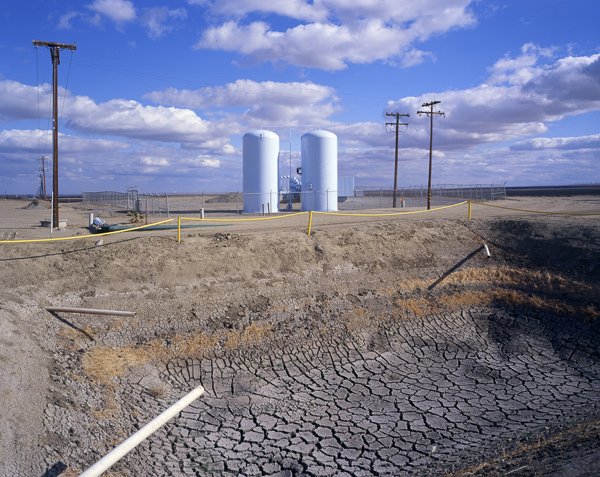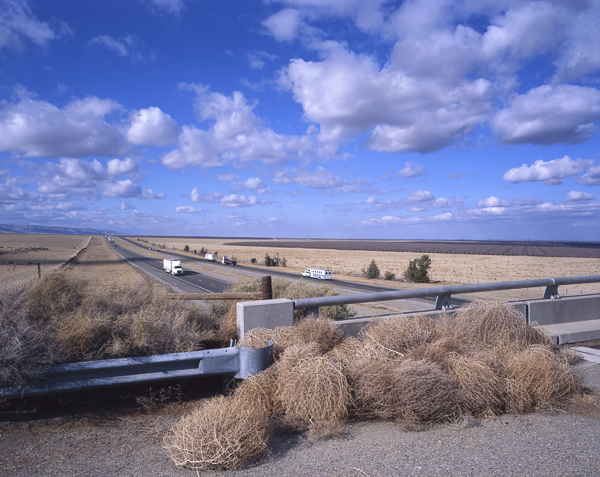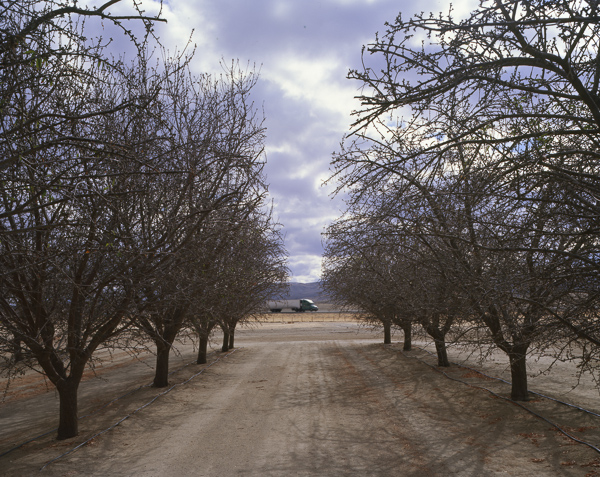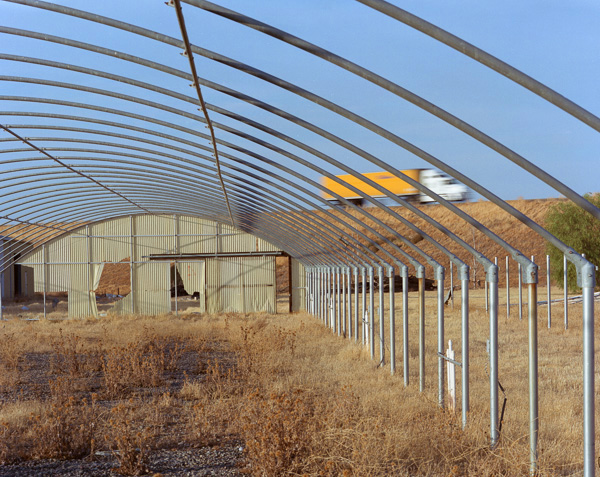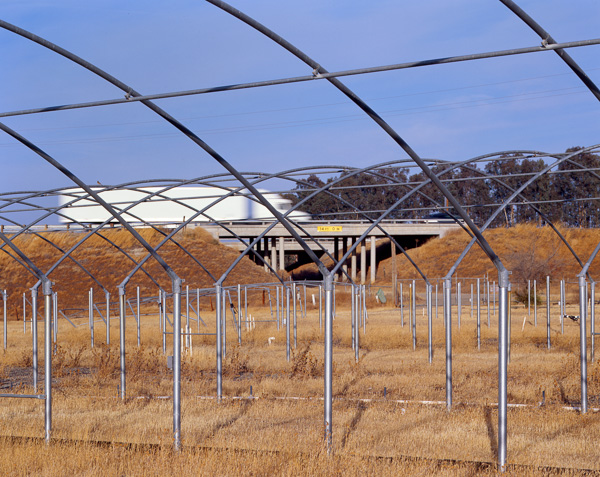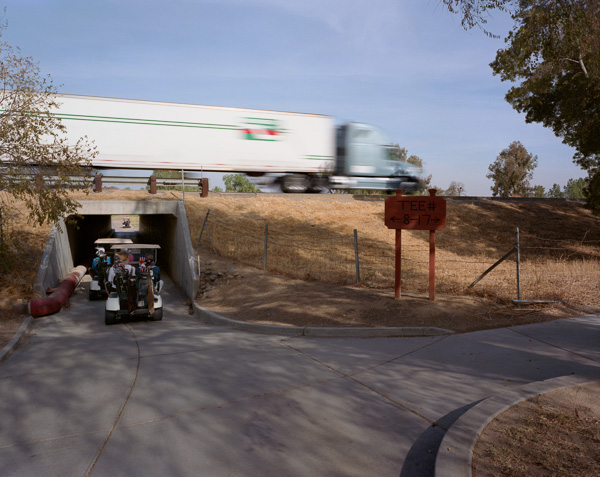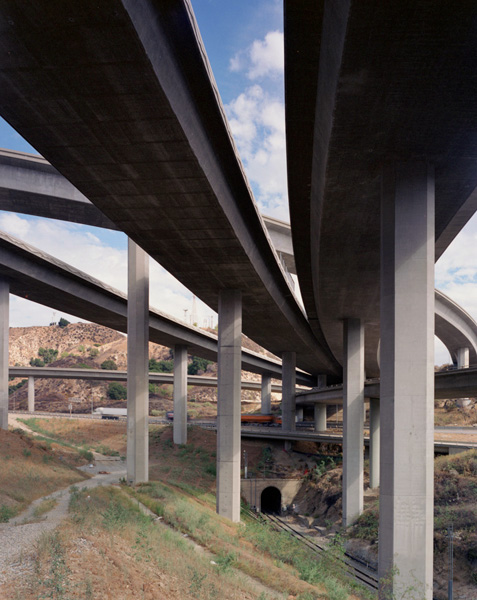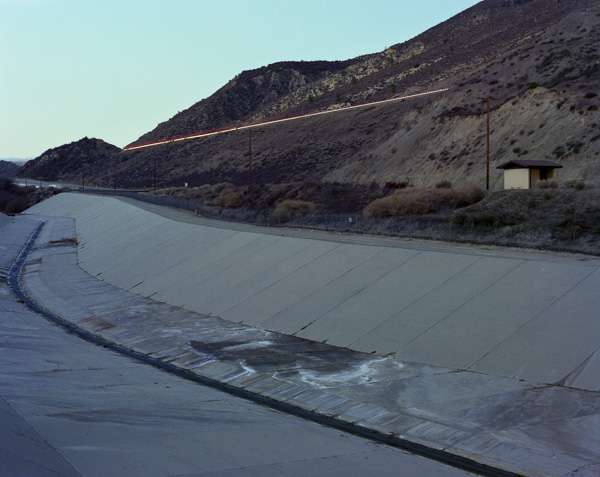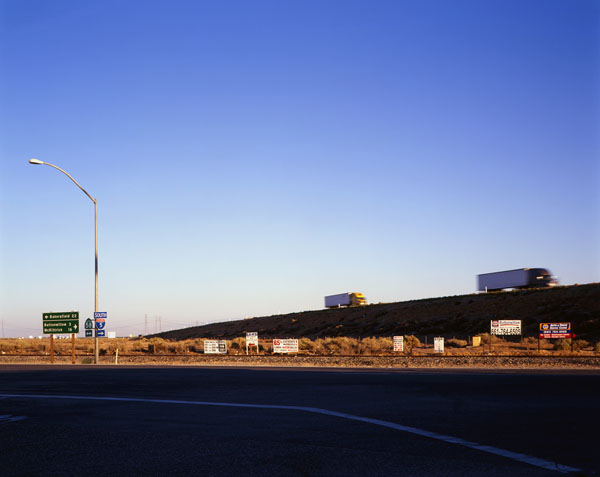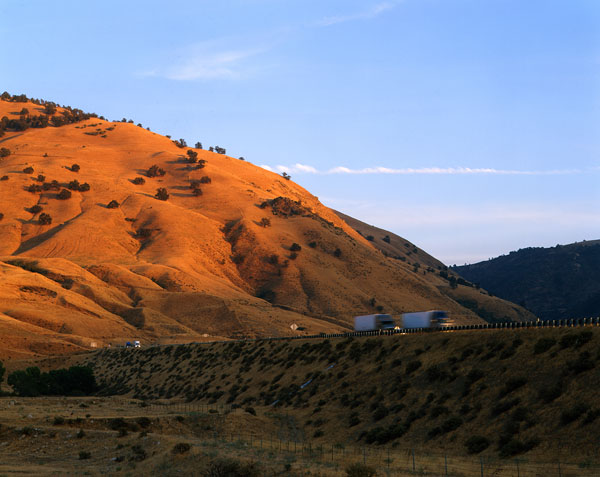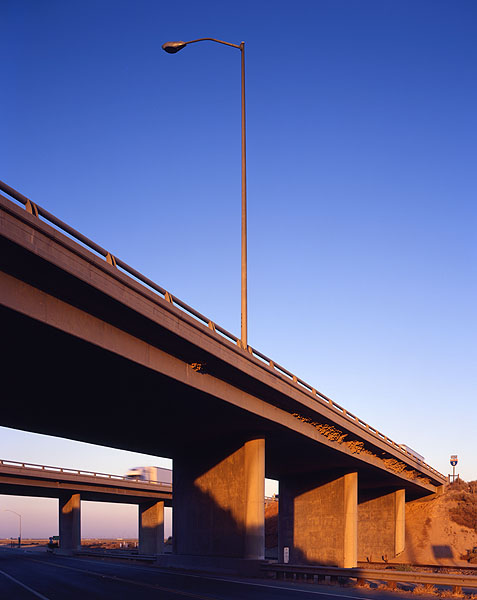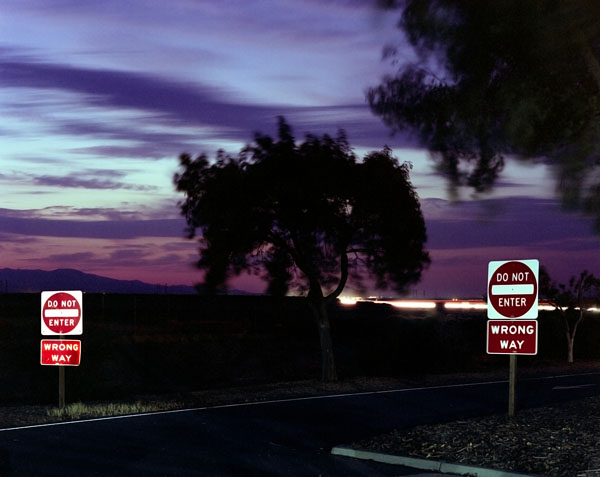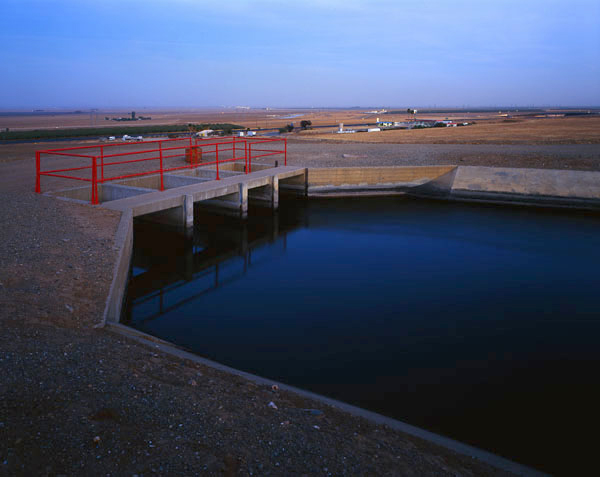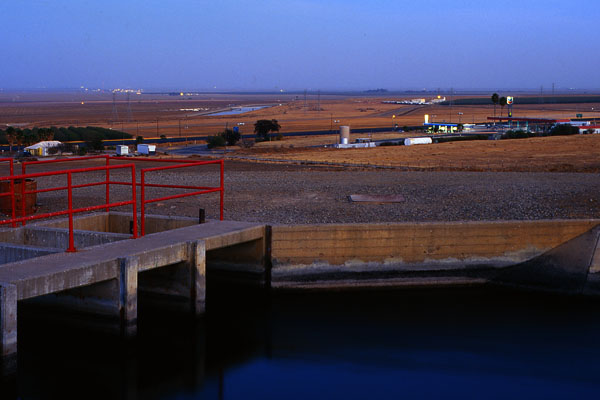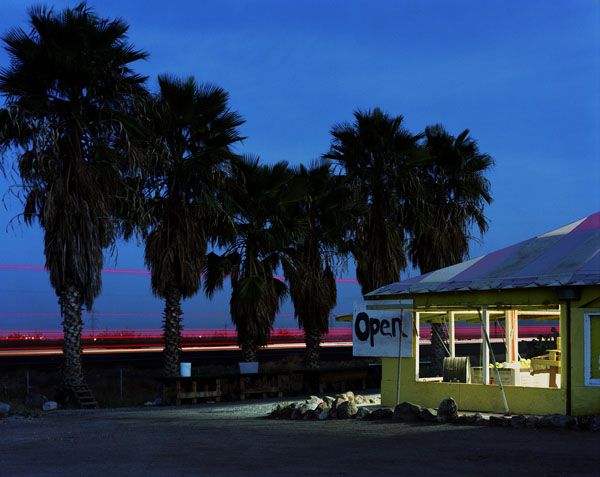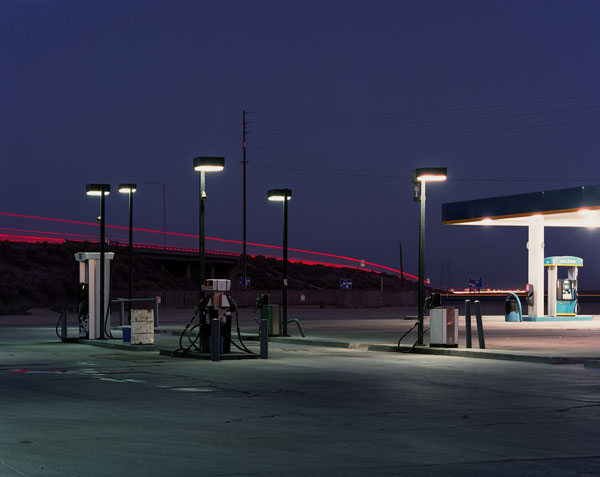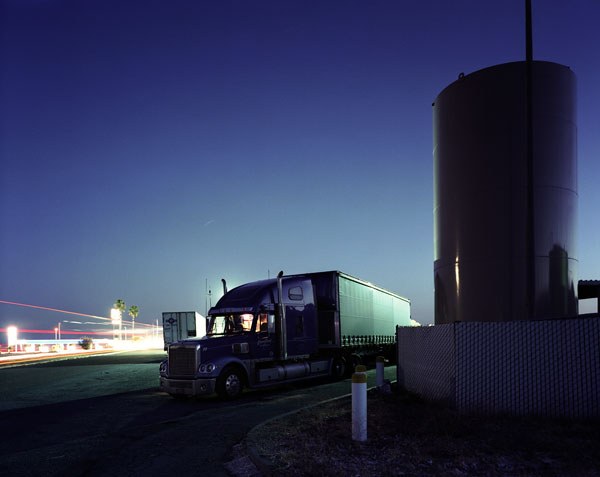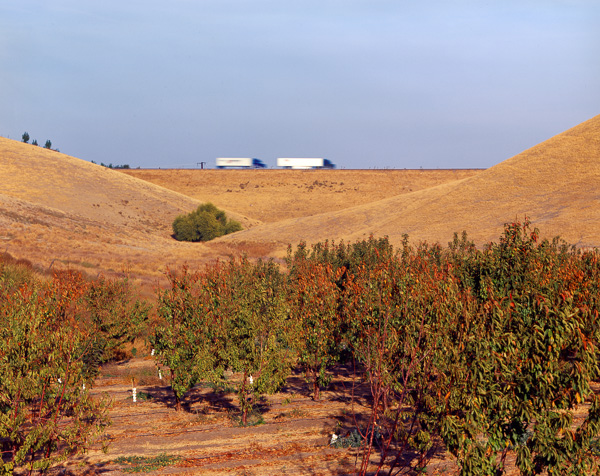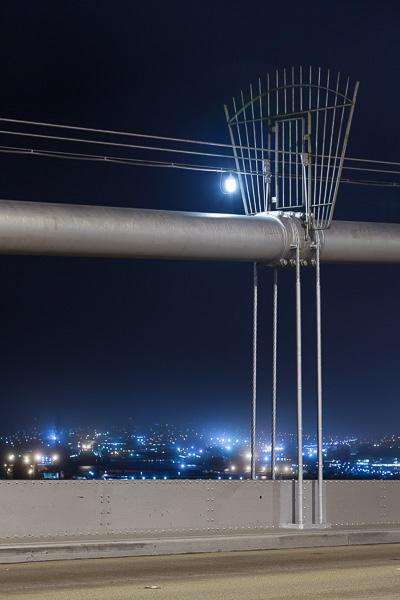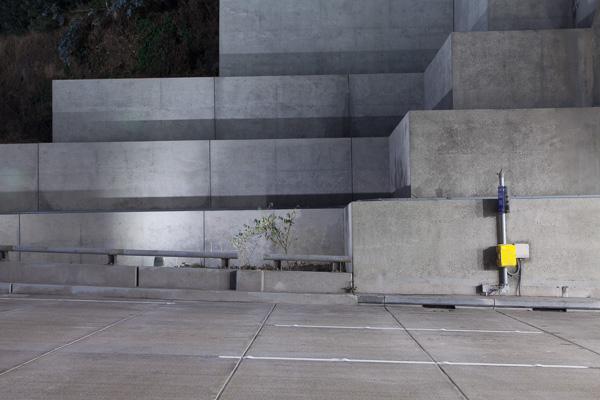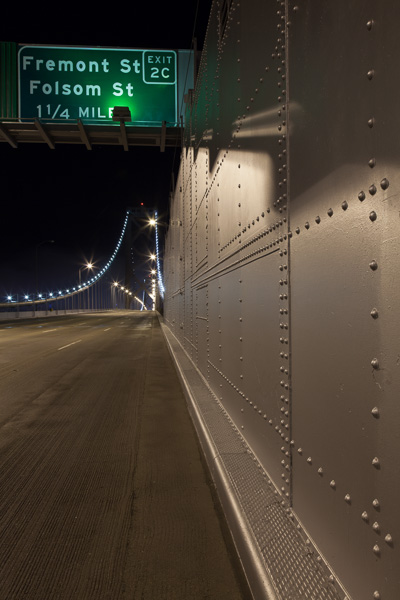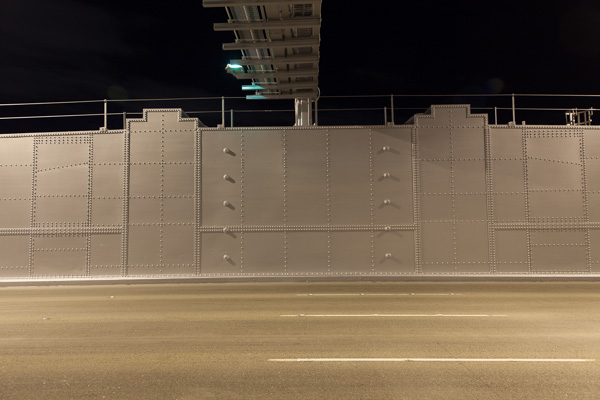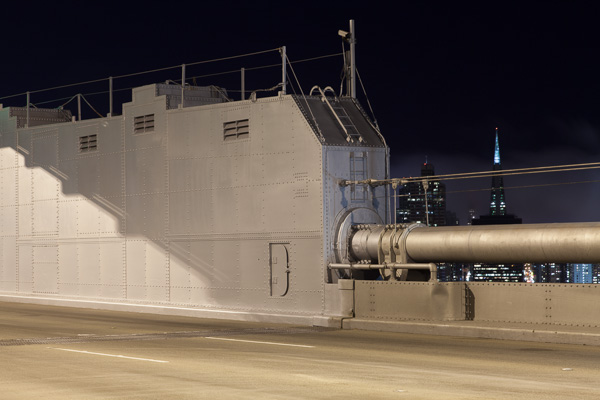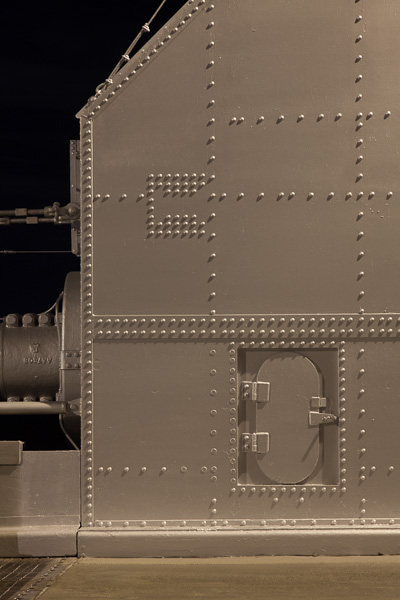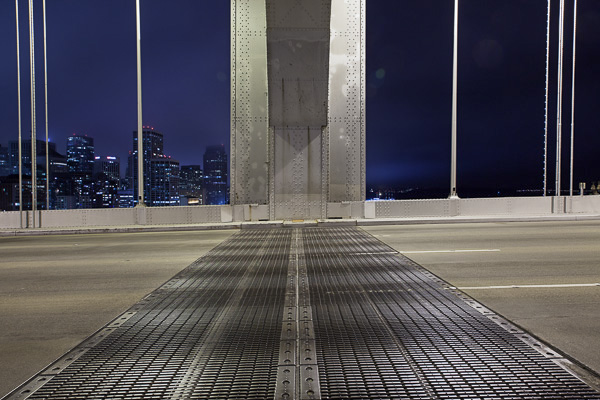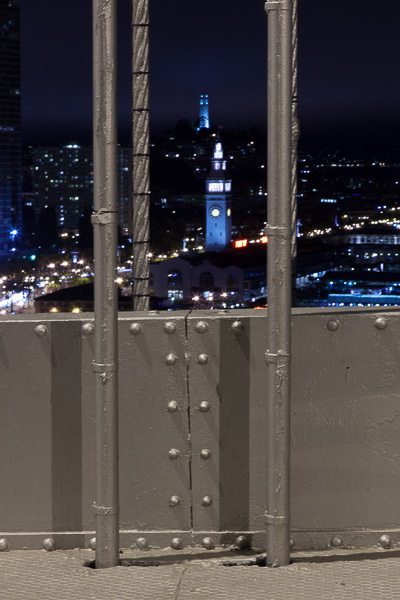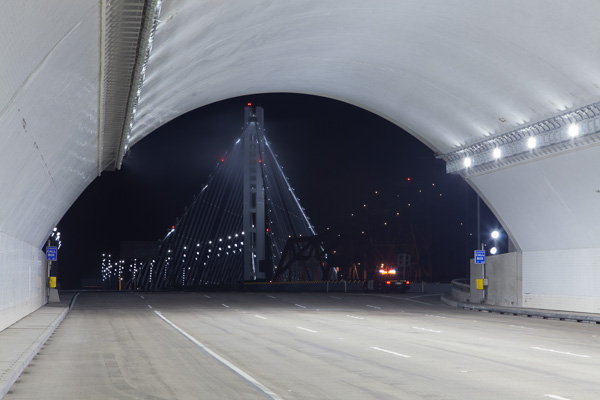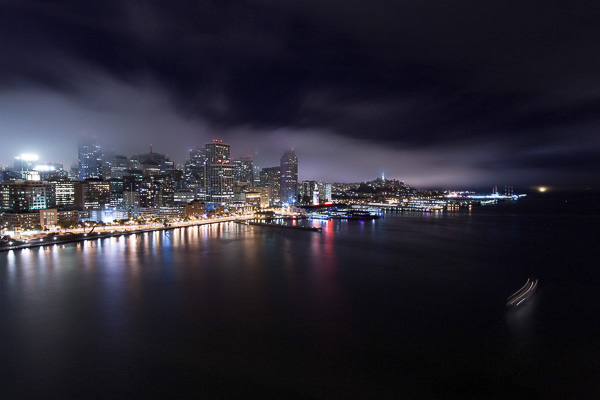Over the past few years, I’ve been trying my best to stay with twilight and night photography, as the site is called. Yet we dislike being stereotyped, including me. After all, I shoot at all times of day, not just at night.
This post, I’ve decided to show something very different for me. Recently, I had use for a couple of weeks of an 18″ 8×10 inch “box camera” with no lens, just a little hole where a lens would be, and a place to put the film at the other. In this case, the “pinhole” was .92mm in diameter, about twice the size of the period at the end of this sentence. For 8×10 at this focal length, this is the equivalent of around f488 (and you thought f16 was stopping down!) Exposures in bright sun are around 15 seconds with ISO 100 film. Because the camera is on a tripod and the exposures are seconds to minutes, I liken the process to night photography.
There is no way to view what you’re capturing, and there are no aids whatsoever on the “box” to help guide you. You simply put it on a tripod, insert a film holder, point it in the direction of your “view” and estimate the field of view, plumb the camera, open the small cover over the “pinhole”, count to 15, and then close the flap. It’s quite anti-climatic and a very free-form, seat-of-the-pants type of photography with few, if any, rules.
Because of the cost of 8×10 film and processing, I shot just 15 views. I found the field of view is similar to 85mm on a 35mm camera or full frame digital. These are scanned from the one negative I shot of each view.
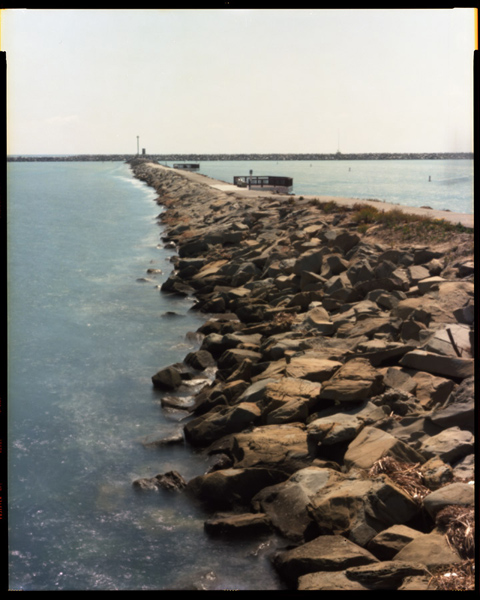 As you can see, the focus is equally “sharp” or “soft”, depending on your outlook, throughout the image in this shot of a jetty. The blurring on the water on the right is a sailboat in this 15 second exposure. I like the way the water looks on the left swirling around the rocks. As you can see, steadying the camera on the tripod to get the horizon straight is a challenge and I almost nailed it, considering I didn’t use a level. That seemed inappropriate for this sort of photography.
As you can see, the focus is equally “sharp” or “soft”, depending on your outlook, throughout the image in this shot of a jetty. The blurring on the water on the right is a sailboat in this 15 second exposure. I like the way the water looks on the left swirling around the rocks. As you can see, steadying the camera on the tripod to get the horizon straight is a challenge and I almost nailed it, considering I didn’t use a level. That seemed inappropriate for this sort of photography.
.
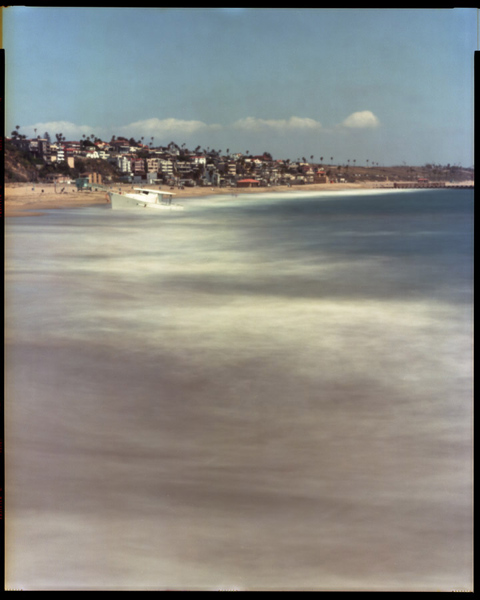 Here is a view from the jetty towards a beached yacht at Playa del Rey (part of Los Angeles). The surf swirls around in this pocket of beach. It looked nothing like this to the naked eye. That’s the charm of this type of camera, as it ‘sees’ differently.
Here is a view from the jetty towards a beached yacht at Playa del Rey (part of Los Angeles). The surf swirls around in this pocket of beach. It looked nothing like this to the naked eye. That’s the charm of this type of camera, as it ‘sees’ differently.
.
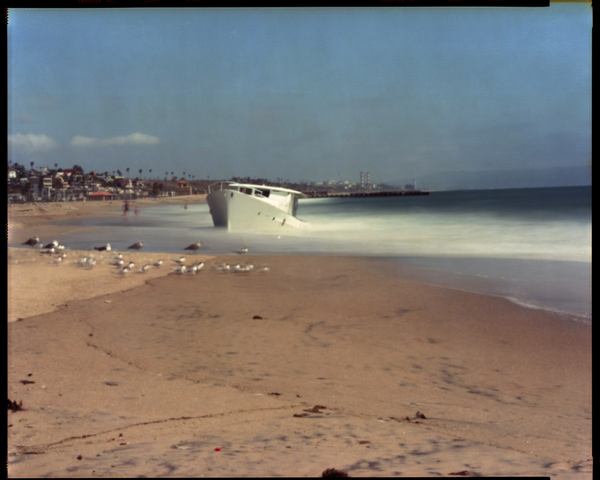 I went onto the beach to get a closer view of the yacht and the surf pounding against it. I waited a few minutes after I set up for the seagulls to return for some foreground interest. They were pretty still for their 15 second group portrait! Considering there is no lens, this is sharper than I thought it would be, both in the closest foreground and the most distant subjects. Note the blurring people on the beach in the background. Yes, my feet and the tripod got wet as the tide was coming in.
I went onto the beach to get a closer view of the yacht and the surf pounding against it. I waited a few minutes after I set up for the seagulls to return for some foreground interest. They were pretty still for their 15 second group portrait! Considering there is no lens, this is sharper than I thought it would be, both in the closest foreground and the most distant subjects. Note the blurring people on the beach in the background. Yes, my feet and the tripod got wet as the tide was coming in.
.
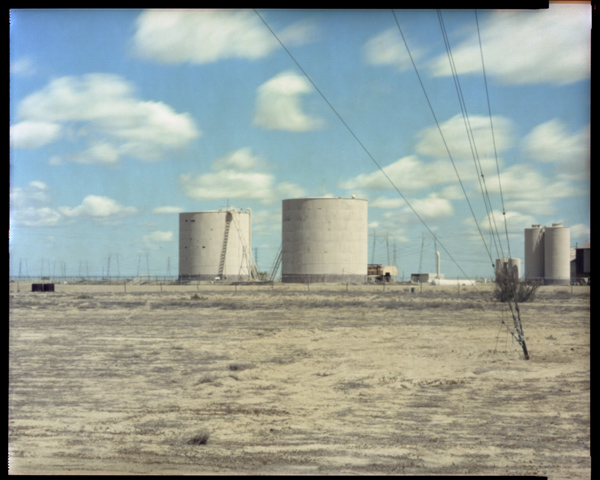 I tried shooting several types of subjects to see what would work best. Rocks-and-roots are a common pinhole subject, but I found my versions were staid. That’s not been my subject matter for many years no matter what the camera. Here I tried a semi-industrial farm area the San Joaquin Valley (the vertical guy-wires are for a huge cell phone tower). The clouds were moving faster than I thought, as you can see them blur past. Below is a shot with my point-and-shoot digital camera that shows the wooden box camera and the view. The soft grittiness of the pinhole version has it’s own feel.
I tried shooting several types of subjects to see what would work best. Rocks-and-roots are a common pinhole subject, but I found my versions were staid. That’s not been my subject matter for many years no matter what the camera. Here I tried a semi-industrial farm area the San Joaquin Valley (the vertical guy-wires are for a huge cell phone tower). The clouds were moving faster than I thought, as you can see them blur past. Below is a shot with my point-and-shoot digital camera that shows the wooden box camera and the view. The soft grittiness of the pinhole version has it’s own feel.
 I went up to Reno/Lake Tahoe for a friend’s wake and ash-scattering and took the camera along. This view is along highway 50 coming into Carson City. I wanted to see the close/distance relationship and focusing. It’s difficult to really see the unique texture and softness at this scale on a computer monitor, as they are only about a quarter of the size of the original negative. The tonal range was excellent–typical of 8×10 negatives.
I went up to Reno/Lake Tahoe for a friend’s wake and ash-scattering and took the camera along. This view is along highway 50 coming into Carson City. I wanted to see the close/distance relationship and focusing. It’s difficult to really see the unique texture and softness at this scale on a computer monitor, as they are only about a quarter of the size of the original negative. The tonal range was excellent–typical of 8×10 negatives.
.
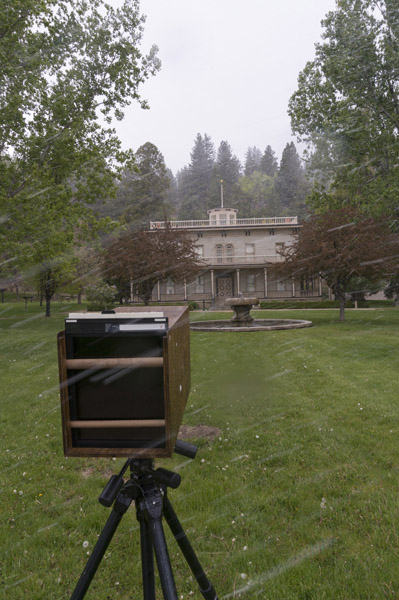 Here I was preparing to shoot the Bowers Mansion, a NPS historical landmark between Carson City and Reno. It was dark overcast and it called for a 5 minute daytime exposure. Then, in the middle of the exposure, the wind kicked up and it began to snow–in late May, no less! It was cold, wet and nasty for large format photography and was 30 degrees. You can really see how primitive the camera is with an 8×10 film holder making the exposure. Below is the shot I made with the pinhole camera.
Here I was preparing to shoot the Bowers Mansion, a NPS historical landmark between Carson City and Reno. It was dark overcast and it called for a 5 minute daytime exposure. Then, in the middle of the exposure, the wind kicked up and it began to snow–in late May, no less! It was cold, wet and nasty for large format photography and was 30 degrees. You can really see how primitive the camera is with an 8×10 film holder making the exposure. Below is the shot I made with the pinhole camera.
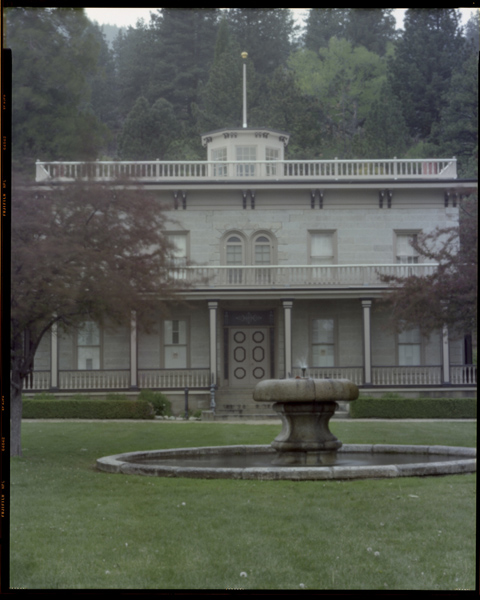 The snow didn’t show because of the long exposure and it was only for the last minute of the exposure, at that. I wouldn’t have started the exposure if I knew it was going to snow! I think I composed this well, after figuring what the field of view was. I was impressed that I centered the building as well as I did! This, like the others are full frame, with no crop (the black rebate edge tells it all). The softness of the trees moving in the wind softens this already soft image.
The snow didn’t show because of the long exposure and it was only for the last minute of the exposure, at that. I wouldn’t have started the exposure if I knew it was going to snow! I think I composed this well, after figuring what the field of view was. I was impressed that I centered the building as well as I did! This, like the others are full frame, with no crop (the black rebate edge tells it all). The softness of the trees moving in the wind softens this already soft image.
.
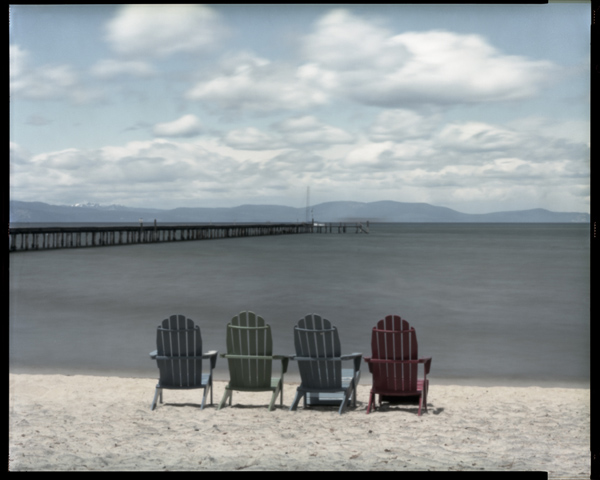 I shot this the day after the evening ashes scattering at the end of this pier on Lake Tahoe. I wanted to have an image as a remembrance to my friend of over 30 years. With this camera, and only 8-8×10 sheets of film for 4 days, I had to make each shot count. I walked up the beach and saw these 4 chairs in a backyard. I didn’t move them, but had to find the right perspective to get the field of view I wanted. This is a 30 second exposure, as the sun was peeping in and out of the clouds during the exposure. I desaturated the color by about half to mute the bright colors of the chairs, lake and sky. This is my favorite image done with this camera and I feel I succeeded in my homage to Mr. S.K. RIP, my friend.
I shot this the day after the evening ashes scattering at the end of this pier on Lake Tahoe. I wanted to have an image as a remembrance to my friend of over 30 years. With this camera, and only 8-8×10 sheets of film for 4 days, I had to make each shot count. I walked up the beach and saw these 4 chairs in a backyard. I didn’t move them, but had to find the right perspective to get the field of view I wanted. This is a 30 second exposure, as the sun was peeping in and out of the clouds during the exposure. I desaturated the color by about half to mute the bright colors of the chairs, lake and sky. This is my favorite image done with this camera and I feel I succeeded in my homage to Mr. S.K. RIP, my friend.
<<<—>>>
If this camera was mine, I would put some guidelines on it for an approximate field of view on each side. Also, I think a “wide angle” pinhole of about 8 inches instead of 18 inches would be more fun. One could really show the infinite depth of focus with such a camera. Again, thanks to Matt for letting me try this camera for something new and different.

